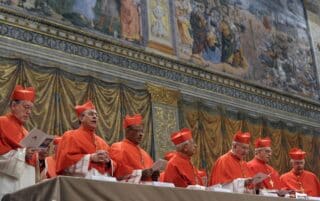2020 marks the 50th anniversary of the First Quarter Storm (FQS) or Unang Sigwa. On Jan. 26, 1970, Day 1 of the FQS, thousands of youth, student activists and workers massed in front of the old Congress building in Manila to protest against President Ferdinand Marcos, then in his second term, as he delivered his fifth State of the Nation Address.No one—much less a male, high school student among the activists—expected that the mass action would turn violent. But as Marcos left the building, his military escorts pushed the demonstrators back to clear the way for him. This triggered the crowd; a mock coffin with the words “Democracy is dead” was thrown at Marcos, almost hitting him. The antiriot police moved in with their truncheons. The activists fought back with their bare hands or threw placards at them, but machine-gun fire from the top of the building drove them away. While a helicopter hovered above, an ice cream vendor brought out a gun from his cart; so did a cigarette vendor from his box of cigarettes. Both fired at the activists. The grass in front of the building danced to the tune of the machine-gun bullets. Those seeking refuge in a nearby school were fired at by a man in a security guard uniform.
Colegialas, identified by their uniforms shrieked in fright while shielding themselves with their bags and notebooks. “Tigil na! Stop it!” They shouted at the truncheon-wielding policemen ready to lunge at them. The male high school student urged the girls to run as he pulled them away from the building. He also pushed away another woman about to be hit, but he got hit instead in the arm. Some years would pass before he learned that the young woman he had tried to save was a spy. Meanwhile, the demonstrators earlier driven away had regrouped and were marching back to the building, shouting “makibaka, huwag matakot (fight, fear not)!”
The young man suffered injury in his arm and had to undergo surgery later. He was among the Batang Tundo (Tondo Youth) from Balut, Gagalangin, Pritil, Velasquez, Hermosa, and Moriones who were part of the Kabataang Makabayan (KM) contingent that had joined the other activists that fateful day. They were mostly third and fourth year students from Torres High School. When the police charged, about three of them, skillful in karate, were able to grab a few truncheons and shields from the uniformed men, which they brought home as “trophies.”
From that day, followed by the Jan. 30 Battle at Mendiola, the Diliman Commune (UP Diliman) strike and other mass actions—such as in Plaza Moriones and Pritil Market, Tondo; the US Tobacco workers’ strike; demonstrations at the US Embassy and Plaza Miranda; the massive demo in Caloocan, the May 1 Labor Day protest—the Batang Tundo and other sectors of society collectively confronted US imperialism, feudalism, and bureaucrat capitalism. In the depressed communities of Tondo where they were immersed, the activists explained the evils of the three “isms.” Many college students from UP Diliman and Lyceum of the Philippines belonging to KM, Samahan ng Demokratikong Kabataan (SDK), and later Katipunan ng Kabataang Demokratiko joined the Batang Tundo in the urban poor areas to integrate with and learn from the masses, and to respond to the call: “Paglingkuran ang sambayanan (Serve the people)” and “Mula sa masa, tungo sa masa (From the masses, to the masses).” Later, other KM and SDK chapters also visited Tondo and joined their “teach-ins” and discussion groups.
The Batang Tundo, imbued with nationalist resolve to help achieve national democracy in place of the semi-feudal and semi-colonial system, sought out their relatives and friends in the provinces, while some stayed in Metro Manila to share their experiences, relating these to the daily struggles of the people. Many of the Batang Tundo were tortured and imprisoned; others died in the struggle against the Marcos dictatorship and martial law.
History cannot dispute the role of the Batang Tundo and all the other committed Batang Pilipinas bred in the earlier years leading to the First Quarter Storm of 1970, and who gradually spread throughout the country. They persisted in the fight until the ouster and flight of Marcos on Feb. 25, 1986. “Ang masa, ang masa lamang, ang siyang tunay na bayani (The masses, the masses alone, are the real heroes)…” The spirit of the FQS lives to this day.
Joey C. Papa, now president of Bangon Kalikasan Movement, was among the Batang Tundo.


